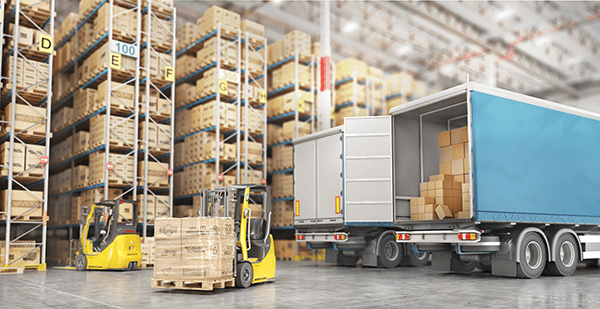Improving Project Efficiency in Logistics with Multi-Step Forms
The world of logistics, rolling with timing, accuracy, and streamlined operations, needs highly effective project management tools to maintain and impact efficiency in every engagement. One of these tools that stands out is the multi-step form logistics efficiency.

Source: Pexels
For today’s chain-like logistics projects, especially transporting large items, a pile of forms to process has become the usual occurrence that has also become a shipper and processor’s horror each time. Luckily, one tool that’s making a hit in relieving logistics process congestion is the use of multi-step forms.
It’s quite a helpful form that can also enhance communication and increase lead conversion, making lives easier, apart from driving efficiency. Read on so you can look into some insights on how it tweaked the industry.
Ways that Unlock Logistics Efficiency with Multi-Step Forms

Simplifying Complex Logistics Projects
For some logistics projects today, particularly those that involve oversized or heavy items, unique challenges have become an every-transaction hurdle. Often, bulky shed transport or shipping storage-safe rooms, for example, need detailed planning and more precise execution.
With a multi-step form, you can help simplify these complex transportation processes, breaking down the complexities into manageable sections and making sure that no important detail will be left out.
Also, when gathering data through a single overwhelming form, details may be skipped (because it’s too long and taxing), leading to costly errors or miscommunication between sender and courier. On the other hand, multi-step forms allow users to provide information in smaller chunks, making it easier for them to focus on each aspect of the transport project.
For logistics businesses looking to implement sophisticated form solutions and streamline their operations further, partnering with an experienced transportation software development company can help create custom digital platforms that integrate seamlessly with existing workflows and enhance overall project management capabilities.
Streamlined Data Collection: Why it Works
As you break down the form submission processes, your logistics business can make sure you collect data that are quite essential and reported in a more logical flow, like:
a. The exact dimensions of the shed or the room
b. Its delivery can be efficiently and timely met
c. All special requirements or specifications for transport become clearer
Each of these steps can become easier to understand and concise enough to allow you, as the logistics provider and your customer, to communicate effectively and avoid errors, if not do away with them altogether. It’s a simplified step-by-step approach that saves time on follow-ups and revisions to make sure you’ll have smoother project execution.
Boosting Lead Conversion with User-Friendly Forms
In logistics today, especially in trending niche services like storage and shed transportation, converting your leads into actual clients can be quite tricky. Your potential client may abandon their cart because of an overly complex or long form, resulting in business or opportunity loss.
It’s where multi-step forms help you keep up and reduce form abandonment by keeping your users engaged, interested, and trusting in your service throughout the submission process, especially in:
1. Breaking up the process
When clients see and are given a single, lengthy form, they often feel overwhelmed. However, multi-step forms are less intimidating versions because they break the process into more digestible or bite-sized pieces, leading to higher completion rates and smoother transactions.
2. Progress indicators
A progress bar or chart that tells your users how far they’ve come can motivate them to complete each form, giving them that sense of accomplishment and urging them to move through each step.
3. Personalized fields
By dynamically adjusting and aligning form fields according to their previous answers, multi-step forms create a more personalized experience. It’s like when a user selects “large storage shed” in one step, then the succeeding step may ask specific questions related to their choice, like “Does it need specialized equipment for loading?”
This smoother and user-friendly experience can translate into more completed forms and, ultimately, more followers and healthily driving leads.
Enhancing Communication and Coordination
It all boils down to the most significant benefit of the multi-step form: the ability to enhance your connection or communication with your clients to help make all your projects work. Especially when you’re about to take on projects that involve heavy or oversized items, communication is quite crucial so you can make sure that all the needed precautions are taken.
Gathering critical information in a logical order
Using multi-step forms can gather detailed information in a more logical sequence, especially for projects like storage shed transport, where many factors, like size, weight, and destination, need to be prioritized. It’s the collection of this info systematically that can help you prevent miscommunication and costly hitches, particularly details on:
a. Origin and destination addresses
b. Preferred delivery dates
c. Access requirements like road conditions and loading docks
All these can help make sure that you leave nothing to chance, enabling you as the courier to plan routes, assign the right equipment, and deploy the most effective team for the job. Ultimately minimizing delays, avoiding costly mistakes, and always maintaining efficiency in your projects.
Conclusion
These multi-step forms may seem like simple tools, but their impact on your project’s efficiency, especially if you’re into logistics, is undeniably effective. From organizing your shipment's otherwise complex and daunting details to reducing errors and boosting lead conversion, these forms are highly handy for streamlining processes and improving client communication. Implementing this multi-step form in your firm might just be the best tool and a mighty step in the right direction.






